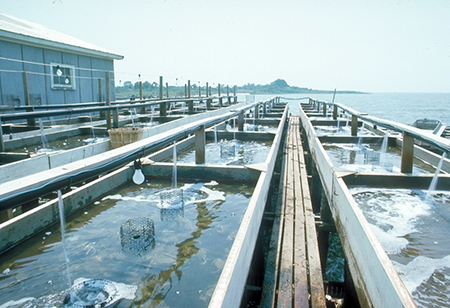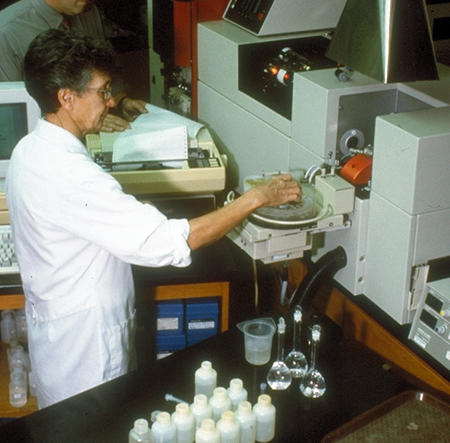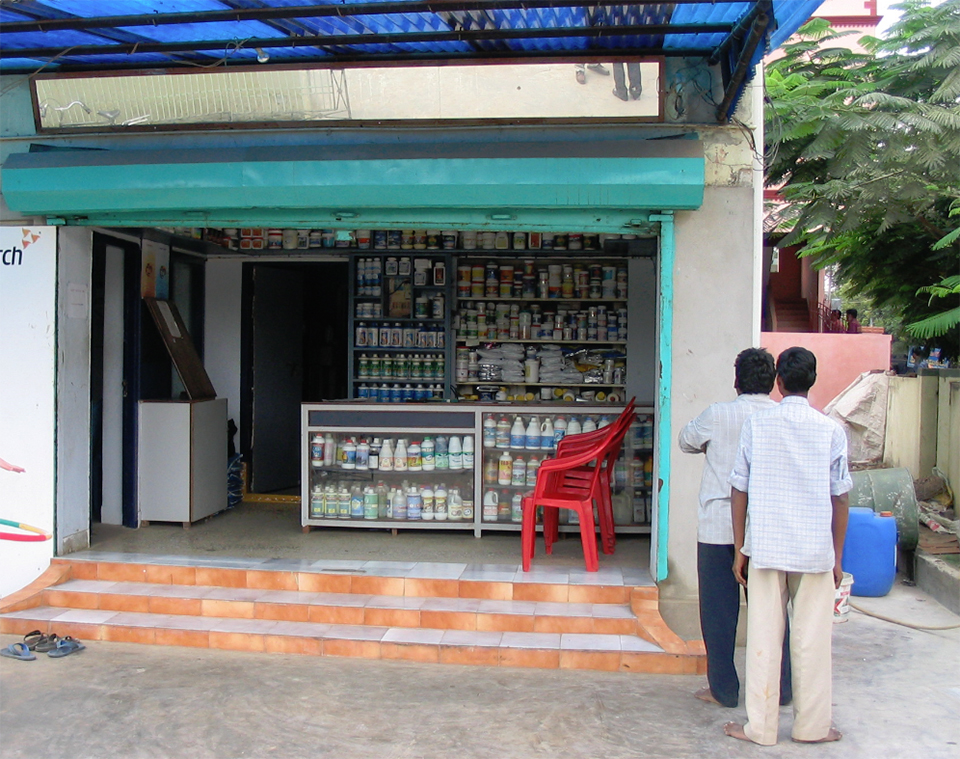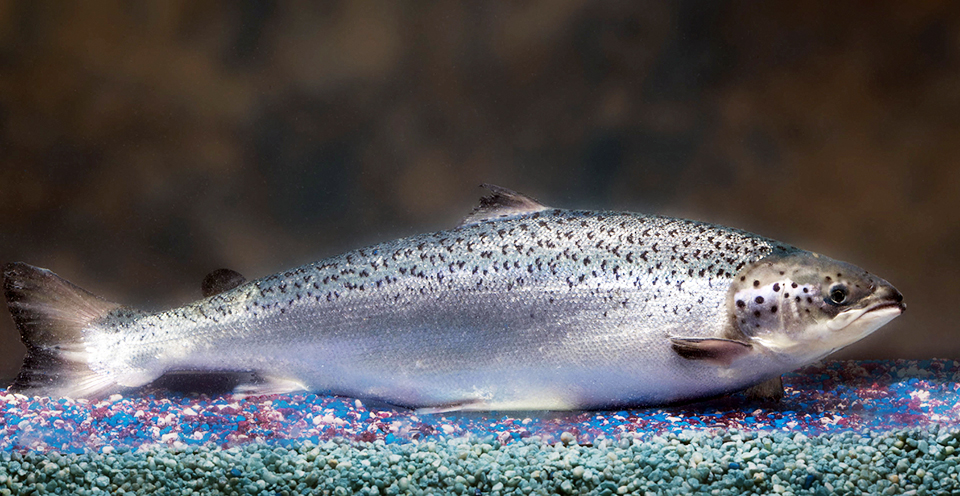A look at brominated flame retardants and other chemicals’ impact on seafood

Recently published studies have detected a variety of chemical compounds in the environment and established that they can accumulate in humans. Additional research on chemical residues in fish, shellfish, and other foods is likely in the future.
U.S. waterway study
During 1999 and 2000, the United States Geological Survey (USGS) surveyed 139 streams across 30 states to determine the types and concentrations of chemicals in U.S. waterways. The study showed that many waterways contained chemicals such as painkillers, antibiotics, caffeine, steroids, insect repellents, reproductive hormones, personal care products, antimicrobial disinfectants, fire retardants, detergent metabolites, and petroleum products. These compounds were present in 80 percent of the streams sampled – not altogether surprising, since current water treatment systems are not capable of removing them from the waste stream.
Chemicals in waterways
The surveyed chemicals are referred to as organic wastewater contaminants or pharmaceutical and personal care pollutants. Their concentrations were generally low and rarely exceeded drinking-water guidelines. However, many of the compounds do not have established guidelines.
In the study of 95 chemical compounds, those most frequently detected were coprostanol (a fecal steroid), cholesterol (an animal steroid), N,N-diethyltoluamide (an insect repellant), caffeine (a stimulant), triclosan (an antimicrobial disinfectant), tri(2-chloroethyl)phosphate (a fire retardant), and 4-nonylphenol (a nonionic detergent metabolite).
The presence of these compounds is cause for increased concern for potential adverse effects on human and ecological health. It is anticipated that many of these compounds may soon appear in the tissues of fish, if their presence has not already been detected.
Prevalent products

It is not surprising that detergent metabolites, steroids, and plasticizers comprise approximately 80 percent of the total chemical concentration, since these are derived from common household products and pharmaceuticals. Table 1 shows concentrations of organic wastewater contaminants by category.
The organic chemicals most frequently discussed by environmentalists are antibiotics, prescription and nonprescription drugs, and reproductive hormones. In this list, nonprescription drugs were found with the greatest frequency. Reproductive hormones may present the greatest environmental impact to aquatic organisms, since even low levels of these compounds produce undesirable effects.
The USGS study did not determine whether the compounds were degraded in the environment. Many compounds undergo decomposition through biodegradation, and many of the products of decomposition actually present a greater danger than the original compounds.
The possible toxicological consequences of a synergistic effect between some of the chemicals are also unknown. As always, the presence of antibiotics in the environment raises questions on the development of antibiotic-resistant microorganisms.
Flick, Total measured concentration of organic wastewater contaminants, Table 1
| Contaminant | Concentration (%) |
|---|
Contaminant | Concentration (%) |
|---|---|
| Steroids | 21.5 |
| Nonprescription drugs | 9 |
| Insect repellents | 1 |
| Detergent metabolites | 36 |
| Disinfectants | 3 |
| Plasticizers | 20 |
| Fire Retardants | 1 |
| Anitbiotics | 3 |
| Insecticides | 1 |
| Polynucleated aromatic hydrocarbons | 1 |
| Reproductive hormones | 1 |
| Other prescription drugs | 1 |
| Antioxidants | 2 |
| Fragrances | 1 |
| Solvents | 1 |
Table 1. Total measured concentration of organic wastewater contaminants by general use category.
Norwegian BFR study
A Norwegian study of eight selected brominated flame retardants (BFR) in human blood serum, sampled from eight groups of differing age and gender at six time periods between 1977 and 1999, was also recently published.
The serum concentrations of seven of the eight BFRs increased during the entire period. The sum of six polybrominated diphenyl ethers increased from 0.44 nanogram per gram lipids in 1977 to 3.3 nanogram per gram lipids in 1999. The BFR serum concentrations from the various age groups were similar, except in the case of very young children (ages 0-4), who exhibited concentrations that were 1.6 to 3.5 times higher. The sources of the BFRs were not suggested in the study.
BFRs are chemically similar to polychlorinated biphenyls (PCBs). They are persistent and bioaccumulative, and expected to become widely dispersed in the environment. Studies have shown some BFR compounds have biological and behavioral effects on animals. Consequently, they have the potential to pose a threat to human and animal health.
Impact on seafood
The impact of the compounds reported in the two studies on fish and shellfish is unknown. There is very little published data on the subject. One reason for the lack of data on residues in aquatic food products is that, until recently, few analytical methods were capable of detecting the compounds at low environmental concentrations.
Since wild fish and shellfish have been the subject of recent food safety concerns, aquatic foods will likely receive a high priority for investigation in further studies of chemical residues in the food chain. Problems related to scombrotoxin or histamine toxicity, methyl mercury, dioxins, polychlorinated biphenyls, natural toxicants (such as paralytic shellfish poisoning), pathogenic microorganisms (Vibrio cholera, V. parahaemolyticus, and V. vulnificus) and ciguatoxin have all been reported in recent years.
Consumer response
While concerns about the safety of fish and shellfish consumption will likely continue, cultured products produced in controlled environments such as recirculating aquaculture systems may be perceived by consumers as having added value when compared with other products in the marketplace. Such consumer interest may encourage commercial aquaculturists to implement practices that further limit chemical use, such as improved biosecurity programs as an alternative to antibiotic administration for disease treatment.
(Editor’s Note: This article was originally published in the June 2002 print edition of the Global Aquaculture Advocate.)
Now that you've reached the end of the article ...
… please consider supporting GSA’s mission to advance responsible seafood practices through education, advocacy and third-party assurances. The Advocate aims to document the evolution of responsible seafood practices and share the expansive knowledge of our vast network of contributors.
By becoming a Global Seafood Alliance member, you’re ensuring that all of the pre-competitive work we do through member benefits, resources and events can continue. Individual membership costs just $50 a year.
Not a GSA member? Join us.
Author
-

George J. Flick, Jr., Ph.D.
Food Science and Technology Department
Virginia Tech (0418)
Blacksburg, Virginia 24061 USA
Tagged With
Related Posts

Responsibility
A review of water quality improvement products
Prof. Boyd examines products used by aquafarmers to improve water quality and conditions in their ponds and discusses their efficacy.

Health & Welfare
10 paths to low productivity and profitability with tilapia in sub-Saharan Africa
Tilapia culture in sub-Saharan Africa suffers from low productivity and profitability. A comprehensive management approach is needed to address the root causes.

Intelligence
10 takeaways from GOAL 2019 in Chennai, India
The Global Aquaculture Alliance held its GOAL conference in Chennai, India, and recruited a host of experts in various fields to share their expertise.

Intelligence
A brief look at genetically modified salmon
If approved by FDA, fast-growing genetically modified salmon will provide a safe and nutritious product similar to other farmed Atlantic salmon.

